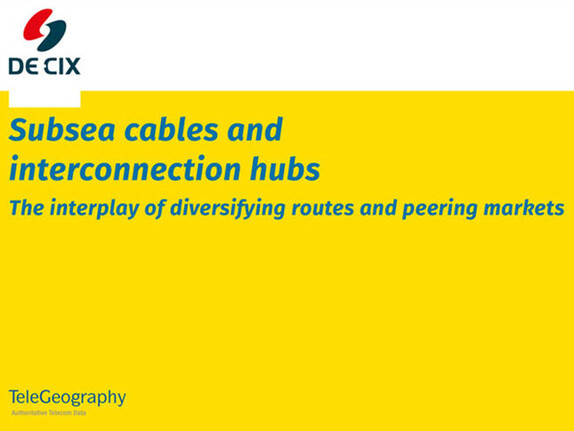The interplay of diversifying routes and peering markets
The global interconnection environment is in the midst of dynamic growth phase. A new breed of cable builders is spearheading a surge in submarine cable deployments, and peering ecosystems around the world are reaching recordbreaking traffic levels.
The length of new submarine cable deployed in 2017 was unmatched in any year since the end of the previous market boom in 2001, with more than 74,000 kilometers of fiber laid. The pace of subsea cable development
could accelerate even further over the next three years, with as many as 74 systems totaling more than 300,000 kilometers in length and worth an estimated $8.8 billion tentatively slated to launch across all major subsea routes.
What is driving all this development? Are fundamental shifts taking place in how networks are deployed? More specifically, can we see a correlation between the development of new routes and where networks are ultimately going to peer?
DE-CIX has commissioned TeleGeography to assess the correlations between the growing subsea cable market and the global market for network interconnection. We will do so by delving into several topics: determining the core drivers of subsea supply and demand, exploring the route priorities of the new cable builders, determining which nodes are growing as interconnection markets, and evaluating cases of specific markets to see if subsea network and interconnection market development go hand-in-hand. In so doing, we hope to provide a clearer sense of the critical synergy shared by the subsea cable and peering markets, while exploring the complexity inherent in determining exactly how strongly these markets correlate.
To learn more about the global interconnection environment, please download the pdf by filling in the form.
